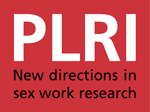HIV/AIDS
Unfavourable laws, stigma, violence, and discrimination cause sex workers’ vulnerability to ill health, social exclusion and human rights violations. Sex workers face these to varying degrees in all cultures from Switzerland to Swaziland, Canada to Cambodia. This guide, published by the International Network of Sex Work Projects, outlines their understanding of HIV and sex work and sets out their global agenda for change. This news interview features members of the Network of Sex Work Projects. They describe the challenges that they face in Uganda and the way that they are subject to stigma and discrimination and excluded from development policy

